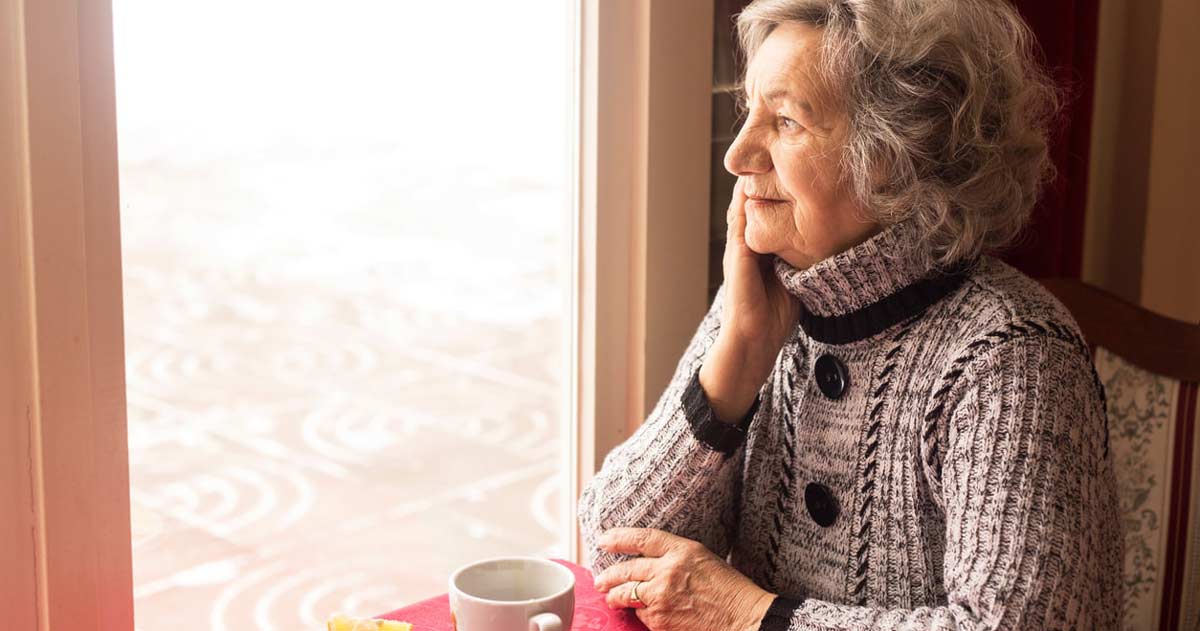Caregiving is one tough job that can really take a toll on even the healthiest person, especially during the dark winter months. As the days shorten and winter sets in, you may be tempted to hunker down and stay indoors, especially if the person you are caring for is frail or bedridden.
Unfortunately, this “cabin fever” mentality can also lead to a condition called seasonal affective disorder or SAD, a form of depression many just call “the winter blues.” Symptoms of SAD include low energy, poor sleep, overeating, weight gain, carbohydrate cravings, and feeling the desire to hibernate and isolate.
According to the Mayo Clinic, the cause of SAD remains unknown, but is associated with:
- “Your biological clock (circadian rhythm). The reduced level of sunlight in fall and winter may cause winter-onset SAD. This decrease in sunlight may disrupt your body’s internal clock and lead to feelings of depression.
- “Serotonin levels. A drop in serotonin, a brain chemical (neurotransmitter) that affects mood, might play a role in SAD. Reduced sunlight can cause a drop in serotonin that may trigger depression.
- “Melatonin levels. The change in season can disrupt the balance of the body’s level of melatonin, which plays a role in sleep patterns and mood.”
But you can prevent or minimize SAD with some simple steps that help alleviate symptoms and keep you on track.
Get more sunlight –
SAD is most common among populations far north and far south of the equator, in fact, HelpGuide, notes “SAD is most common in people who live at least 30 degrees latitude north or south (north of places such as Jacksonville, Florida, Austin, Texas, Cairo, Egypt, and Hangzhou, China, or south of Perth, Australia, Durban, South Africa, and Cordoba, Argentina).”
So even though the days are short, take advantage of every bit of sunlight available. First, open shades and drapes and let the sunshine in! If possible, arrange furniture to take advantage of natural sunlight in rooms where you spend the most time. When night falls, turn on lights to create a warm and comforting space. Whenever possible, especially on sunny days, get outdoors and take a walk, go for a run, or just sit outside and absorb that precious sunlight.
Get exercise –
Good health — mental and physical — is essential for caregivers and a regular exercise routine is a great way to combat the symptoms of SAD and cabin fever. There are many ways to get enough exercise, from doing daily chores like cleaning and laundry, to walking, running, swimming, and yoga. The blog “Exercise and Depression,” from ShineALightOnSAD.com offers a number of ways to get the exercise you need, both indoors and outdoors.
Improve your diet –
Winter and the holidays bring present all kinds of opportunities to eat exactly the kinds of foods that should be avoided to prevent SAD. In fact, people with SAD may crave certain foods like carbohydrates because they stimulate production of serotonin in the brain. Start by avoiding carbohydrate-rich foods like cookies, cakes, bread, and pasta, as well as foods that are high in sugar. In their place add more healthful foods like lean meat and fish, berries, and dark leafy vegetables to your diet to get essential vitamins (especially vitamins D and B-12). For a full list of the best foods for combatting SAD, check out the Healthline article, “Winter Blues? Try These 10 Food Tips to Help Ease Symptoms.”
Get good sleep —
Caregiving can often impact sleep, especially if you have to check on or care for someone throughout the night. But a good night’s sleep is one of the most important weapons in your SAD arsenal and should not be dismissed. Lack of sleep can make any depression worse, leaving you feeling fatigued, moody and out of sorts. If sleeping well is difficult, there are many ways you can get to the root of the problem and start sleeping well again. The WebMD.com article, “Sleep and Depression,” looks at the ties between sleep and depression and ways to improve the quality of your sleep.
Try light therapy –
Another innovative way to get the light you need every day is through the use of a light therapy box. These lamps radiate light similar to sunlight and can help to minimize SAD symptoms. In general, light boxes should provide light at 10,000 lux with minimal ultraviolet light exposure. It’s important to note, however, that light boxes are not regulated by the U.S. Food and Drug Administration and may not be right for everyone. If you’re considering using a light box, check with your physician first and if approved, find out more in the Mayo Clinic article, “Seasonal affective disorder treatment: Choosing a light therapy box.” You an also compare light boxes at BuyersGuide.org.
Consider talk therapy –
Also known as “cognitive behavior therapy,” talk therapy is another option. According to WebMD.com, a study by the University of Vermont in Burlington comparing talk therapy and light therapy showed talk therapy was more productive in reducing SAD symptoms.
“The talk therapy was cognitive behavioral therapy, a treatment approach that taught people to challenge negative thoughts about dark winter months and to avoid behaviors, such as social isolation, that can harm mood.
“In the first winter after initial treatment, both groups had similar relief from symptoms of depression associated with SAD, the findings showed. However, two winters after initial treatment, recurrence of depression symptoms occurred in 46 percent of those in the light therapy group, compared with only 27 percent of those in the talk therapy group.”
If you experience any of the symptoms of SAD, consult your physician and determine the best course of action for you. We can’t make winter go away, but we can keep SAD at bay with just a little work.
If you have questions about short- or long-term care for a loved one call Margaret Nagel at (517) 206-5000 or download our brochure to learn about our care levels, cost, and amenities.


